A true-life fairy tale, a princess in Hollywood who met and married a real prince and became the Princess of Monaco. Grace Kelly had a presence about her, eternally beautiful and stylish that made her a legend on and off the silver screen. A fashion icon of all time, Grace Kelly’s fame and popularity is well known even to this day.
It was a joy writing this article. I have always loved her movies, especially her films by director Alfred Hitchcock. Her life is an example for us all – classic beauty for the ages, wonderful fashion and style, praised for her acting in Broadway and Hollywood, and becoming a prominent example of nobility.
Grace Kelly’s Life
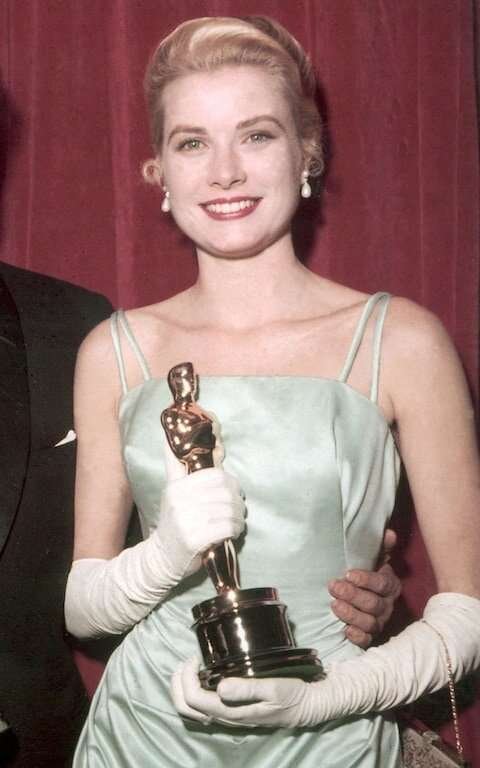
Grace Kelly, the woman who epitomized elegance and sophistication and seen by many as a hypnotic persona in the film, fashion world, and a legendary icon still in this modern age. Born on November 12, 1929, in Philadelphia, Grace Patricia Kelly was destined for greatness. Grace’s journey to stardom began at the American Academy of Dramatic Arts in New York, where she honed her craft with the precision of a sculptor chiseling marble. She was no ordinary debutante; her beauty was matched by a fierce ambition and an innate talent that would soon catapult her into the limelight.
Her father’s influence on Grace was profound. He instilled in her a competitive spirit, a relentless drive for excellence, and the belief that no dream was too big. John B. Kelly Sr., was a formidable figure, a self-made millionaire who embodied the American Dream. He was an Olympic rower who secured three gold medals for the United States, one in 1920 and two in 1924. Known as “Jack” Kelly, he was not just an athlete but also a successful businessman, founding Kelly for Brickwork, a company that contributed significantly to the construction industry in Philadelphia. His remarkable achievements in both sports and business earned him a reputation as a larger-than-life character.
Grace’s mother, Margaret Katherine Majer Kelly, was equally influential. A former model and the first woman to coach women’s athletics at the University of Pennsylvania, she brought grace and poise to the Kelly household. Margaret emphasized the importance of education, culture, and refinement, complementing Jack’s more rugged approach to success. The blend of her mother’s elegance and her father’s tenacity created a unique environment that nurtured Grace’s multifaceted talents.

Bing Crosby, Grace Kelly, and Frank Sinatra in High Society.
Education played a significant role in Grace’s early life. She attended the prestigious Ravenhill Academy, a Catholic girls’ school in Philadelphia, where she developed a love for the arts. Grace was not just academically inclined; she also participated in school plays and showed an early interest in acting. Her passion for performance was evident and she dreamed of pursuing a career in the theater. She later attended the American Academy of Dramatic Arts in New York. There, she refined her craft and prepared for the journey that would take her from the stages of Broadway to the heights of Hollywood and eventually to the halls of European royalty.
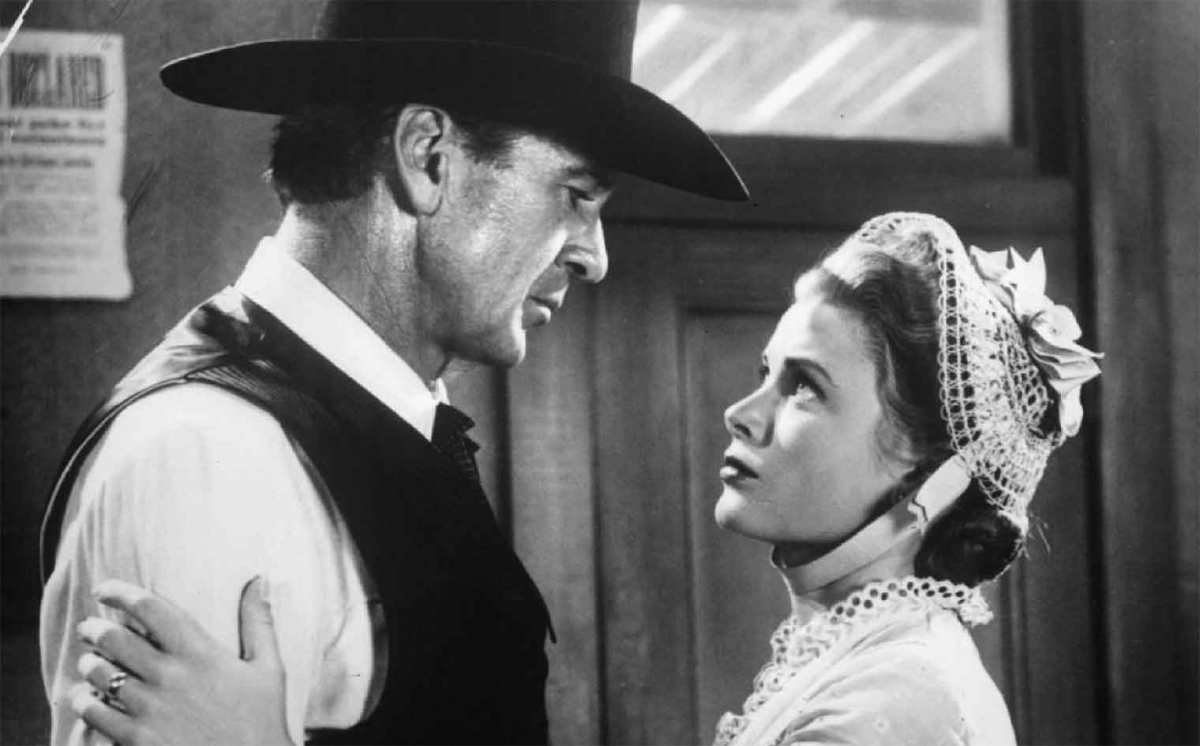
Gary Cooper and Grace Kelly in High Noon
Her breakthrough came in 1952 with the movie “High Noon,” but it was her collaboration with the master of suspense, Alfred Hitchcock, that immortalized her in cinematic history. Films like “Dial M for Murder,” “Rear Window,” and “To Catch a Thief” showcased her ability to blend icy poise with simmering sensuality.
Dial M for Murder, 1954

Alfred Hitchcock found his muse in Grace and together they created a legacy. “Dial M for Murder,” a classic where Grace Kelly’s radiance lights up the screen under the maestro Hitchcock’s meticulous direction. Released in 1954, “Dial M for Murder” is a taut, suspenseful thriller that showcases Grace Kelly in a role that perfectly marries her ethereal beauty with a steely resolve. She plays Margot Wendice, a wealthy socialite trapped in a web of deceit and danger spun by her cunning husband, Tony Wendice, portrayed by Ray Milland. The plot unfurls with Tony discovering Margot’s affair with an American crime-fiction writer, Mark Halliday (Robert Cummings). Instead of confronting her, Tony devises a meticulous plan to murder her and inherit her wealth. He blackmails an old acquaintance into executing the deed, intending to stage it as a botched burglary.
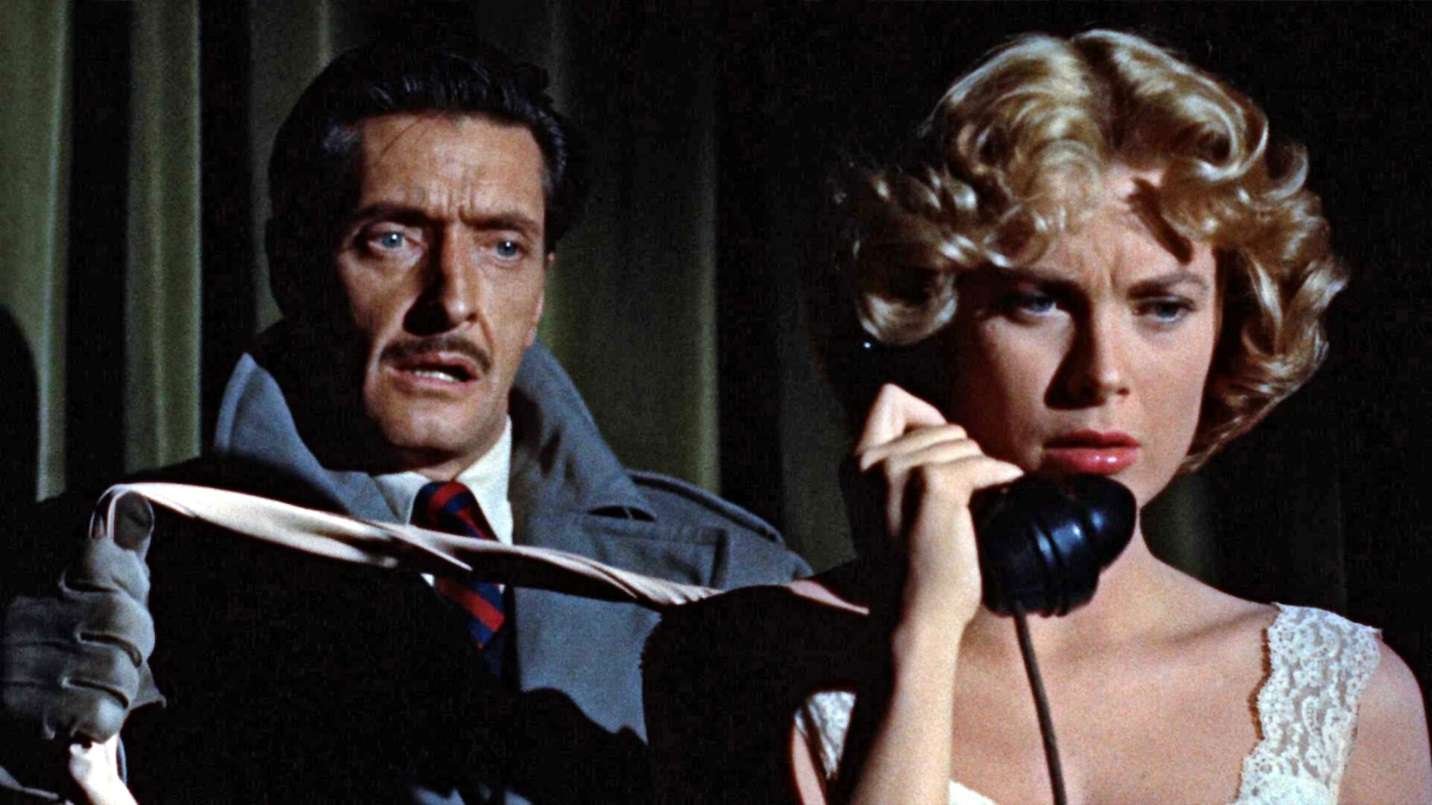
She effortlessly transitions from a charming and unsuspecting wife to a woman grappling with fear and betrayal. Her portrayal captures the audience’s empathy, making them root for her as the suspense tightens its grip. One of the film’s most memorable sequences is the attempted murder scene. Kelly’s Margot fights for her life with a ferocity that belies her delicate exterior, ultimately turning the tables on her would be killer. The scene is a crescendo of tension, where Hitchcock’s direction and Kelly’s performance coalesce into pure cinematic magic.
Kelly’s collaboration with Hitchcock in this film solidified her status as the quintessential Hitchcock blonde, cool, composed, and utterly captivating. Her performance in “Dial M for Murder” not only elevated the film but also cemented her place in the annals of Hollywood’s Golden Era.
Rear Window, 1954
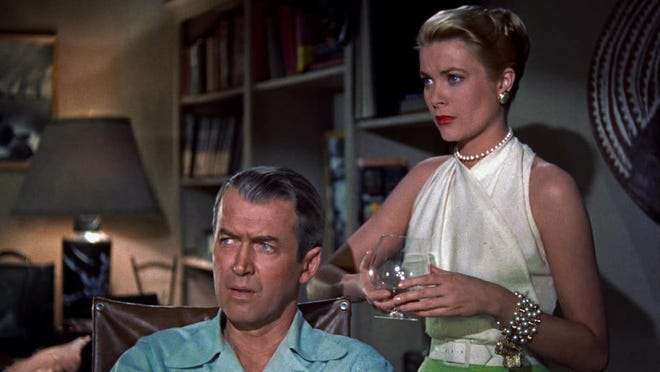
“Rear Window,” now there’s a masterpiece that truly showcases Grace Kelly’s dazzling talent and unparalleled charm. Released in 1954, “Rear Window” is another Hitchcockian thriller that solidified Grace Kelly’s status as an icon of both beauty and brains. She stars alongside James Stewart, who plays the role of L.B. “Jeff” Jeffries, a globetrotting photojournalist confined to his Greenwich Village apartment with a broken leg. With little to do but gaze out of his window, Jeff becomes a voyeur of the lives in the adjacent apartments.
Grace Kelly plays Lisa Carol Fremont, Jeff’s girlfriend, a high-fashion model with a penchant for adventure and a heart of gold. Lisa is the epitome of Hitchcock’s cool blonde archetype, poised, graceful, and brimming with an understated sensuality.
![]()
Grace Kelly’s entrance, dressed in an exquisite Edith Head gown, is nothing short of breathtaking. She embodies the quintessential 1950s high society woman, effortlessly blending sophistication with an underlying curiosity and bravery. As the plot thickens, Jeff becomes convinced that one of his neighbors, Lars Thorwald (Raymond Burr), has murdered his wife. Lisa, initially skeptical, is drawn into Jeff’s obsession. Her transformation from a skeptical bystander to an active participant in Jeff’s sleuthing is a testament to Kelly’s range as an actress. One of the film’s most gripping sequences involves Lisa breaking into Thorwald’s apartment to find evidence. Here, Kelly’s performance shines with a mixture of fear and determination.
The tension is palpable as she navigates the dangerous territory, showcasing her character’s bravery and resourcefulness. Grace Kelly’s portrayal of Lisa not only adds depth to the film but also provides a perfect counterbalance to Stewart’s character. “Rear Window” is a brilliant study of voyeurism, suspense, and the complexities of human relationships, with Grace Kelly’s performance at its heart. “Rear Window” is a cinematic treat that never loses its appeal.
To Catch a Thief, 1955

“To Catch a Thief,” the epitome of glamour and intrigue set against the dazzling backdrop of the French Riviera. Grace Kelly’s role in this film is a delightful gem in Hitchcock’s treasure trove. Released in 1955, “To Catch a Thief” stars Grace Kelly alongside the ever-charming Cary Grant. The film is a stylish romantic thriller with Kelly playing the role of Frances Stevens, a wealthy and adventurous American socialite. The plot revolves around John Robie, played by Cary Grant, a retired cat burglar who is suspected of returning to his old ways when a series of jewel thefts occur along the Riviera. To clear his name, Robie must catch the real thief.
Enter Grace Kelly’s character, Frances Stevens, who is vacationing with her mother and becomes fascinated by Robie. From their first encounter, the chemistry between Kelly and Grant is palpable. Frances is drawn to the mystery and danger surrounding Robie, and her playful, teasing manner adds a delightful spark to their interactions. Kelly’s performance is a masterclass in sophistication and allure, as she perfectly balances Frances’s charm with a hint of daring. One of the film’s most memorable scenes is the picnic sequence where Frances seduces Robie with a combination of flirtation and gourmet food. Grace Kelly’s delivery is both seductive and playful, making it one of the most enchanting moments in the film. Her character’s boldness and confidence are showcased beautifully here, underscoring Kelly’s ability to portray strong, independent women. The film is also famous for its breathtaking cinematography, capturing the stunning vistas of the French Riviera.

“To Catch a Thief” is a delightful blend of romance, mystery, and high style, with Grace Kelly’s performance at its heart. Grace Kelly’s wardrobe, designed by Edith Head, is another highlight. Each outfit she wears is more glamorous than the last, cementing her status as a fashion icon. The scene where she wears a gold gown to the masquerade ball is particularly unforgettable, tailored perfectly with a polished sophistication.
Grace Kelly & Prince Rainer III of Monaco
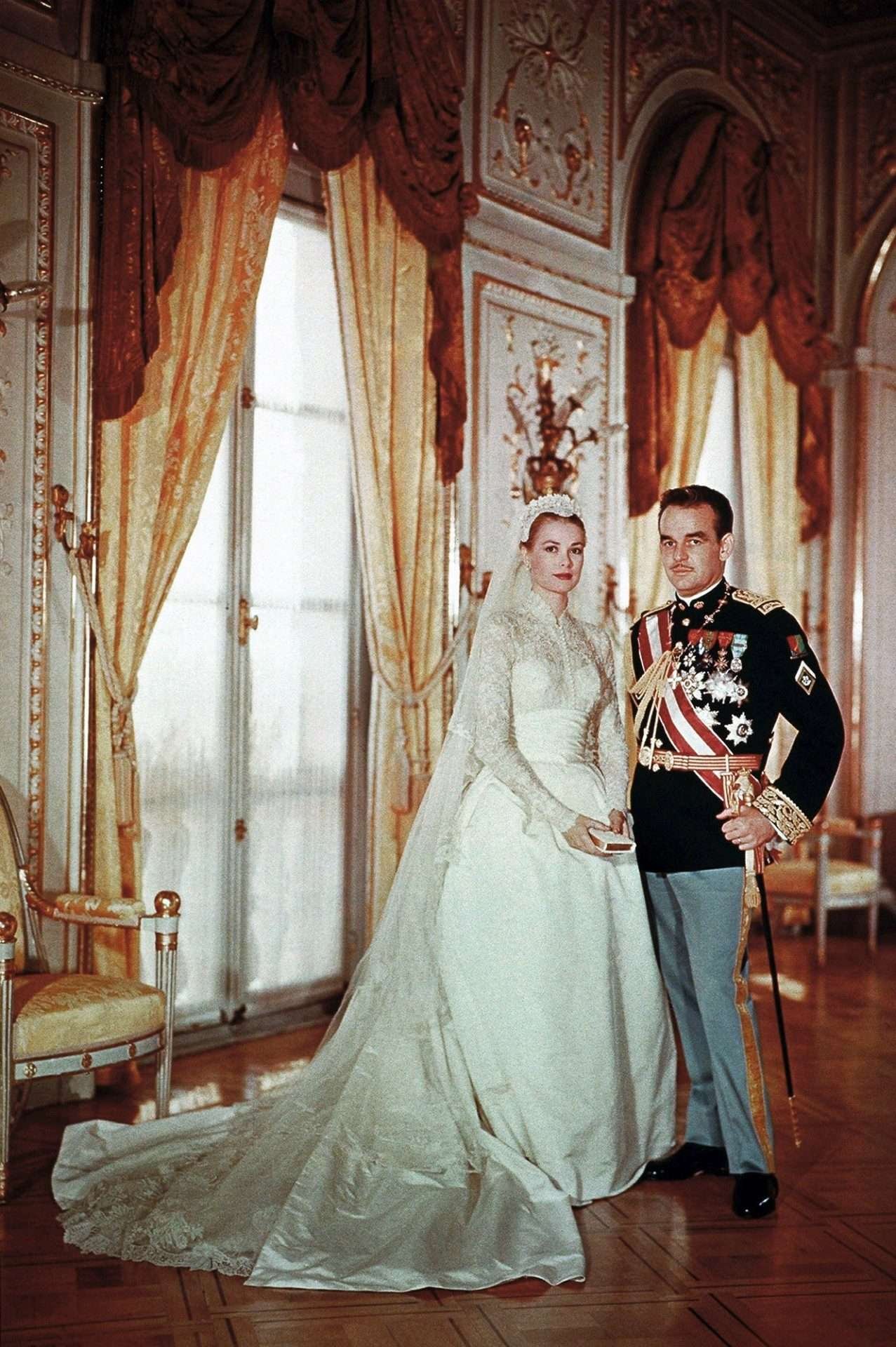
Grace Kelly first met Prince Rainier III in 1955 during a photoshoot at the Cannes Film Festival. The rendezvous was arranged by the magazine Paris Match, which orchestrated a meeting between the American actress and the European prince at the Prince’s Palace in Monaco. Their connection was instantaneous and what began as a publicity stunt soon blossomed into a full-fledged romance. Prince Rainier III, born on May 31, 1923, was the sovereign of Monaco, a tiny yet glamorous principality on the French Riviera. Educated in prestigious institutions across Europe, Rainier was not only a ruler but also a reformer who modernized Monaco’s economy and infrastructure, transforming it into a renowned center for tourism and luxury. The engagement of Grace Kelly and Prince Rainier III was announced in January 1956, sending waves of excitement worldwide.
Grace’s transition from screen siren to real-life princess was a spectacle that captivated the world. Their wedding, held on April 19, 1956, was nothing short of a grand affair, often dubbed “the wedding of the century.” The ceremony took place at St. Nicholas Cathedral in Monaco, attended by a plethora of dignitaries, celebrities, and the world’s media. Grace’s wedding gown, designed by MGM’s Helen Rose, was a masterpiece of lace, silk, and pearls, cementing her status as a fashion icon. Grace Kelly’s entry into the royal family brought a new wave of glamour and attention to Monaco.
A Tragic End to a Brilliant Star
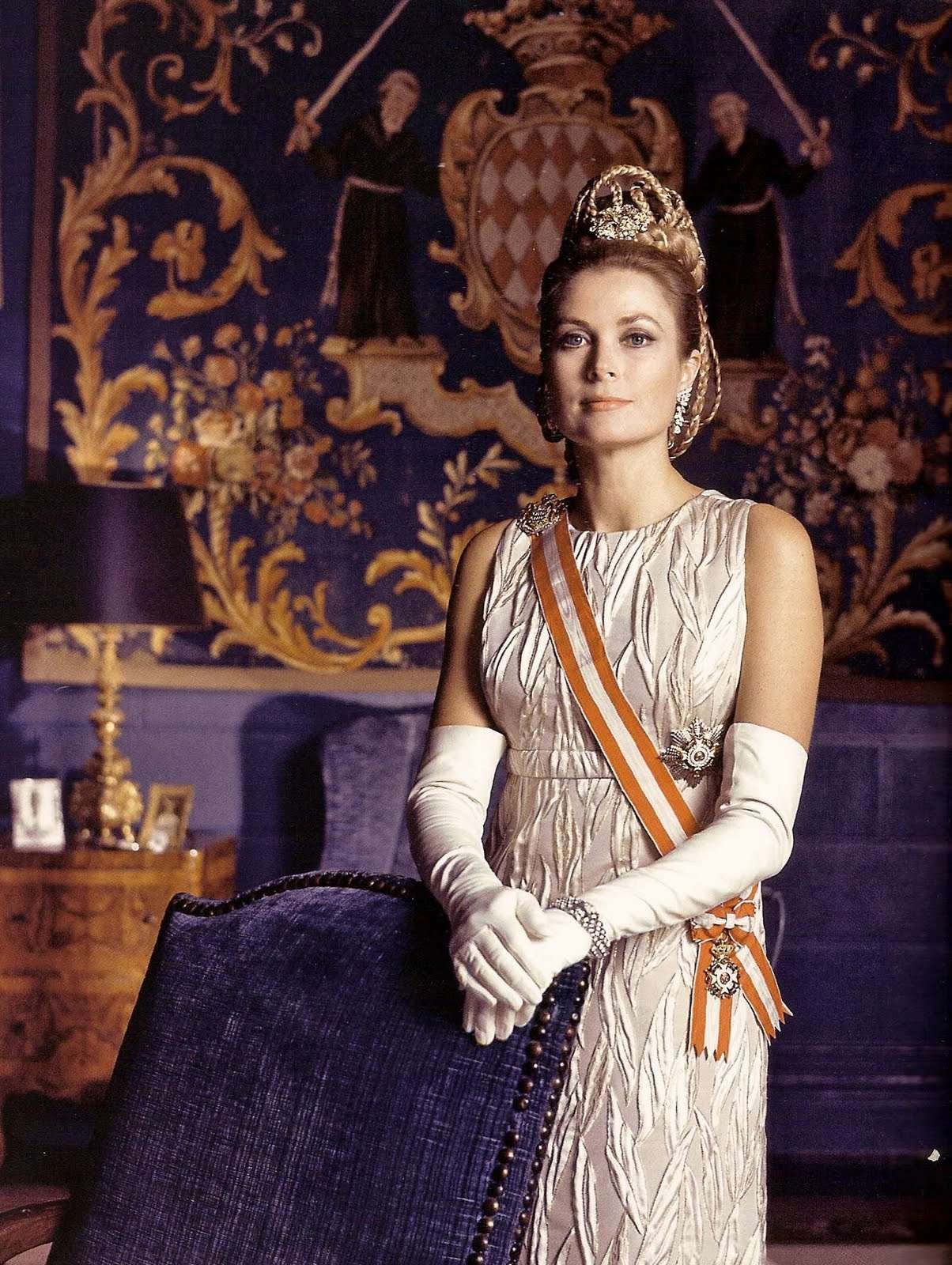
Tragically, Princess Grace’s life was cut short on September 14, 1982, in a car accident on the winding roads of Monaco. Her death was a profound loss for the principality and her fans worldwide. Prince Rainier never remarried and he continued to rule Monaco until his own death in 2005. The love story of Grace Kelly and Prince Rainier III remains one of the most enchanting tales of the 20th century.
As Princess Grace, she infused Monaco with the allure and sophistication of Hollywood. Her presence brought international attention to the small principality, making it a hub of elegance and culture. Grace’s commitment to her new role was evident in her tireless dedication to philanthropic endeavors. She championed the arts, establishing the Princess Grace Foundation in 1964 to support local artists and promote cultural initiatives. Her foundation continues to nurture artistic talent, ensuring her legacy endures. Grace was also actively involved in charitable work, supporting causes such as children’s welfare, education, and healthcare. She served as the president of the Monaco Red Cross where her efforts had a profound impact on the community. Balancing her royal duties with motherhood, Grace was a devoted matriarch to her three children, Princess Caroline, Prince Albert, and Princess Stéphanie. Each of her children inherited her sense of duty and commitment to Monaco. Despite the demands of royal life, Grace ensured that her family remained her top priority, providing them with a loving and nurturing environment.

She will always be an inspiration to all woman. Her legacy endures, a testament to her indomitable spirit and timeless allure. Grace Kelly, the woman who lived her life with a grace befitting her name, remains a symbol of elegance and a beacon of Hollywood’s Golden Age. Grace Kelly was a force of nature, a true queen both on and off the screen.
Kelly was an actress in film, TV, and stage. She was awarded an Oscar, three Golden Globes, three National Board of Review Awards, and a BAFTA nomination. She is best known for her films: High Noon, The Country Girl, High Society, Rear Window, Dial M for Murder, and To Catch a Thief.
References
Grace: A Biography, Thilo Wydra, Skyhorse, 2012.
High Society: The Life of Grace Kelly, Donald Spoto, Three Rivers Press, 2016.
IMDB



